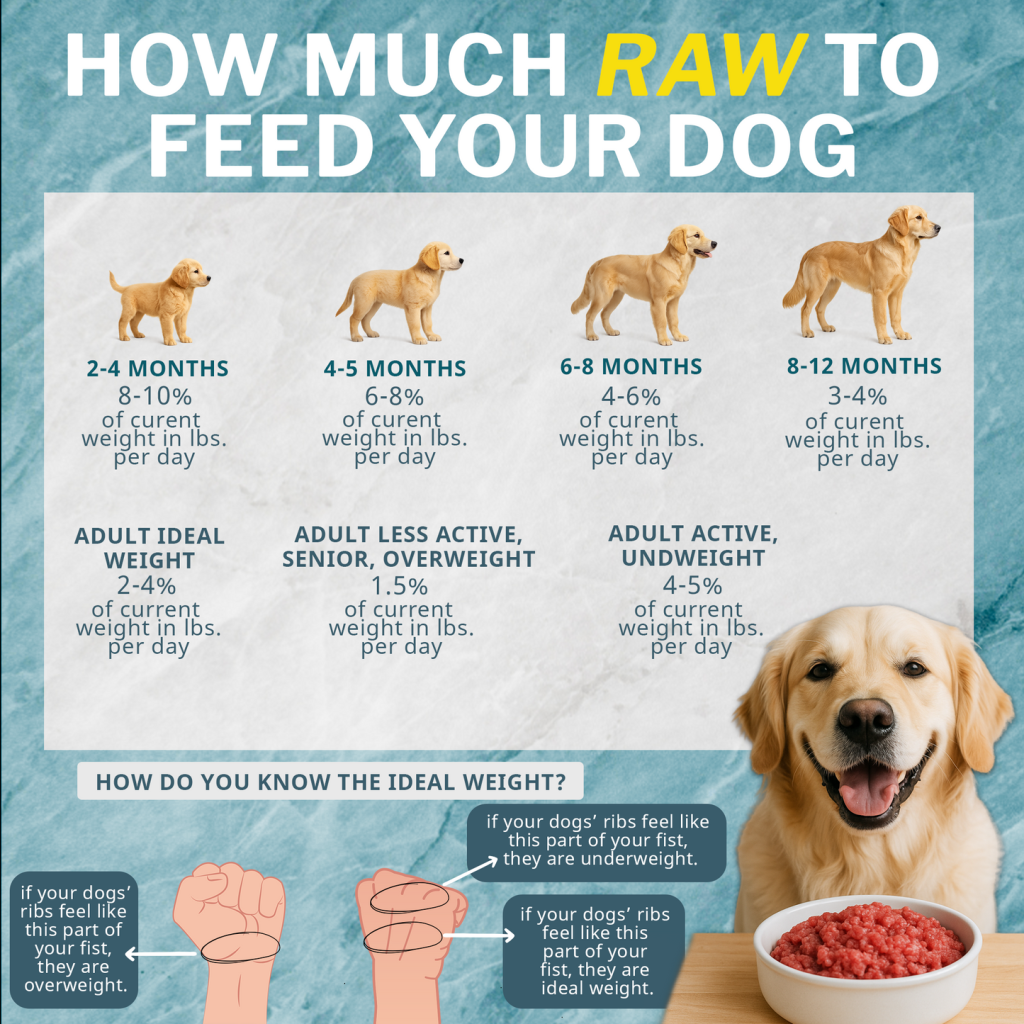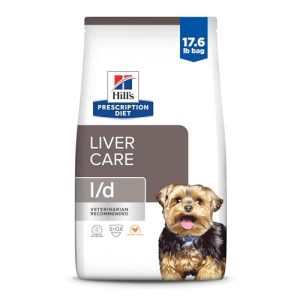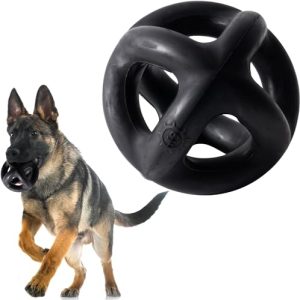Are you considering switching your furry friend’s diet to raw food but feeling unsure about how much to feed a 10-pound dog? You’re not alone.
Many pet owners like you are exploring the benefits of raw diets but face the challenge of figuring out the right amount to serve. Feeding too much or too little can impact your dog’s health, energy, and happiness. Imagine the peace of mind you’ll feel once you understand exactly how to nourish your pet with the perfect portion of raw food.
In this guide, we’ll unveil the secrets to providing the ideal serving size, ensuring your dog thrives with every meal. Dive in to discover how you can make mealtime a nourishing experience for your beloved companion.
Daily Raw Food Amount
Feeding a 10-pound dog raw food needs care and attention. The right daily amount keeps your dog healthy and active.
Raw food diets vary by dog size, age, activity, and health. Knowing how much to feed helps avoid overfeeding or underfeeding.
Calculating Based On Body Weight
Daily raw food amount usually ranges from 2% to 3% of your dog’s body weight. For a 10-pound dog, this means feeding about 0.2 to 0.3 pounds of food per day.
This amount provides enough nutrition without adding extra weight. You can adjust slightly based on your dog’s needs.
- 10 pounds x 2% = 0.2 pounds (3.2 ounces)
- 10 pounds x 3% = 0.3 pounds (4.8 ounces)
Adjusting For Activity Level
Active dogs need more calories. Feed more if your dog runs, plays, or works daily. Less active dogs need less food.
You can increase food up to 4% of body weight for very active dogs. For low activity, reduce to about 1.5%.
- Low activity: 1.5% of body weight (2.4 ounces)
- Moderate activity: 2% to 3% (3.2 to 4.8 ounces)
- High activity: up to 4% (6.4 ounces)
Considering Age And Health
Puppies and senior dogs have special needs. Puppies need more food to grow. Older dogs may need less food and special nutrients.
If your dog has health problems, consult a vet. Adjust food type and amount based on health advice.
- Puppies: feed 3% to 4% of body weight
- Adult dogs: feed 2% to 3% of body weight
- Senior dogs: feed 1.5% to 2% of body weight
- Health issues: follow vet recommendations
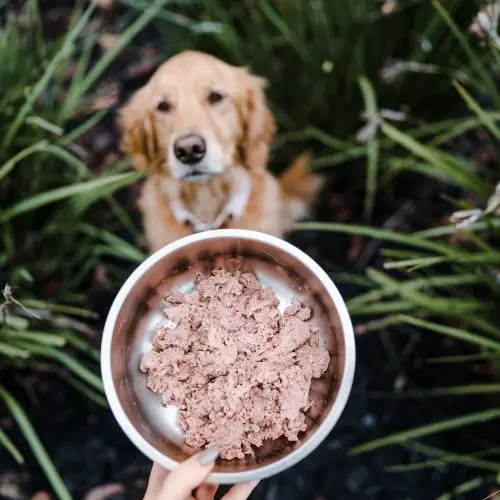
Credit: wefeedraw.com
Types Of Raw Food
Feeding a 10-pound dog raw food means giving a mix of nutrients. Different types of raw food give different benefits.
Muscle meat, organ meat, bones, and supplements make a balanced raw diet. Each type has a special role.
Muscle Meat
Muscle meat is the main part of a raw diet. It provides protein and energy for your dog.
Good choices include beef, chicken, turkey, and lamb. These meats supply essential amino acids.
- Lean cuts are best for daily feeding
- Include some fat for energy
- Fresh and high-quality meat is important
Organ Meat
Organ meat gives vitamins and minerals that muscle meat lacks. It is very nutrient-dense.
Common organ meats are liver, kidney, and heart. Liver should be about 5% of the total diet.
- Liver is rich in vitamin A and iron
- Kidneys provide B vitamins and protein
- Heart supplies taurine and CoQ10
Bones And Supplements
Raw bones help clean teeth and add calcium. Never feed cooked bones, they can splinter.
Supplements fill any nutrient gaps. Fish oil and kelp powder are common additions.
- Raw meaty bones like chicken wings or necks
- Calcium supports strong bones and teeth
- Omega-3 supplements improve skin and coat
Feeding Frequency
Knowing how often to feed your 10-pound dog raw food is important. It helps keep your dog healthy and happy.
Feeding frequency depends on your dog’s age, activity, and digestion. You can feed daily or on alternate days.
Daily Vs. Alternate Days
Feeding your dog raw food every day keeps energy steady. It is easier to digest smaller meals daily.
Some owners feed raw food every other day. This can save time and reduce food waste.
- Daily feeding suits puppies and active dogs.
- Alternate day feeding may work for less active dogs.
- Watch your dog’s weight and energy to adjust feeding.
Meal Portioning Tips
Divide the daily amount into two or three meals. Smaller portions are easier to digest and reduce mess.
Use your dog’s weight to measure portions. About 2-3% of body weight per day is a good start.
- For a 10-pound dog, feed about 3 to 5 ounces daily.
- Split meals into equal parts for each feeding.
- Adjust portions if your dog gains or loses weight.
Signs Of Proper Feeding
Feeding a 10-pound dog the right amount of raw food is key to its health. Watching for signs that your dog is eating well helps you keep it healthy.
These signs show that your dog’s diet fits its needs. They include weight control, energy levels, and digestion.
Healthy Weight Maintenance
Your dog’s weight should stay steady with proper feeding. Being too thin or too heavy can cause health problems.
- Ribs should be felt but not seen.
- Your dog’s waist should be visible from above.
- Check weight regularly with a scale.
- Adjust food amounts if weight changes.
Energy And Vitality
A well-fed dog shows good energy. It plays, runs, and stays active throughout the day.
| Energy Sign | What to Look For |
| Alertness | Bright eyes and quick responses |
| Playfulness | Enjoys games and exercise |
| Restfulness | Calm sleep without restlessness |
Digestive Health Indicators
Good digestion shows your dog is eating the right amount of raw food. Watch for signs of healthy digestion daily.
- Regular, firm stools without diarrhea or constipation
- Minimal gas or bloating
- Clear eyes and clean coat
- Happy mood and no signs of stomach pain
Common Feeding Mistakes
Feeding a 10-pound dog raw food needs care. Small mistakes can harm your pet.
Knowing what to avoid helps keep your dog healthy and happy.
Overfeeding Risks
Giving too much raw food may cause weight gain. This can lead to health problems.
- Extra calories add up quickly.
- Overweight dogs face joint stress.
- Obesity can shorten a dog’s life.
- Watch portion sizes carefully.
Nutrient Imbalances
Raw food diets must be balanced. Too much or too little of nutrients causes issues.
| Nutrient | Too Much | Too Little |
|---|---|---|
| Calcium | Kidney problems | Weak bones |
| Protein | Liver strain | Muscle loss |
| Fat | Weight gain | Low energy |
Unsafe Food Choices
Some raw foods can harm your dog. Avoid toxic or unsafe items.
- Never feed raw onions or garlic.
- Avoid grapes and raisins.
- Do not give cooked bones.
- Stay away from spoiled meat.
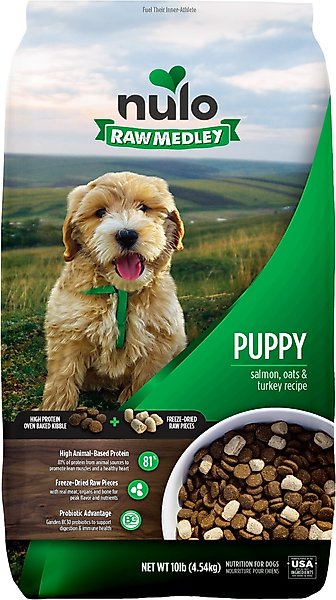
Credit: www.chewy.com
Transitioning To Raw Diet
Switching your 10-pound dog to a raw food diet needs care. This helps your dog adjust safely.
Start slow and watch your dog’s health closely. This guide helps you feed the right amount.
Gradual Introduction
Begin by mixing raw food with your dog’s current food. Increase the raw portion each week.
- Start with 10% raw food and 90% old food.
- After a few days, raise raw food to 25%.
- At two weeks, feed 50% raw food.
- By four weeks, your dog can eat 100% raw food.
Monitoring Reactions
Watch your dog for any signs of discomfort or allergies. Check stool quality and energy levels.
| Reaction | What to Do |
| Loose stools | Reduce raw food amount and try again slowly |
| Vomiting | Pause raw food, consult vet if needed |
| Good energy and healthy stools | Continue with the current feeding plan |
Adjusting Portions
Feed about 2-3% of your dog’s body weight in raw food daily. Adjust based on activity and health.
Example feeding amount for a 10-pound dog:
- 10 pounds × 0.02 = 0.2 pounds (3.2 ounces)
- 10 pounds × 0.03 = 0.3 pounds (4.8 ounces)
Feed between 3 to 5 ounces per day. Divide into two meals for best results.
Consulting A Veterinarian
Feeding your 10-pound dog raw food needs care and advice. A veterinarian can guide you on the right amount and nutrients.
Veterinarians understand your dog’s health and can create a safe feeding plan. This helps avoid feeding mistakes.
Personalized Feeding Plans
Your dog’s age, weight, and activity level affect how much raw food it needs. A vet can tailor a plan just for your dog.
- Calculate daily calorie needs
- Choose the right protein and fat ratio
- Adjust portions based on activity
- Include supplements if needed
Addressing Health Concerns
Some dogs have allergies or health problems. A vet helps spot these and adjust the diet safely.
| Health Issue | Raw Food Adjustment |
| Allergies | Avoid certain proteins |
| Digestive problems | Add probiotics or fiber |
| Kidney issues | Limit protein amount |
Regular Checkups
Regular vet visits keep track of your dog’s health and diet effects. The vet can change the feeding plan as needed.
- Monitor weight and body condition
- Check for signs of nutrient deficiency
- Update diet with life stage changes
- Discuss any new health concerns
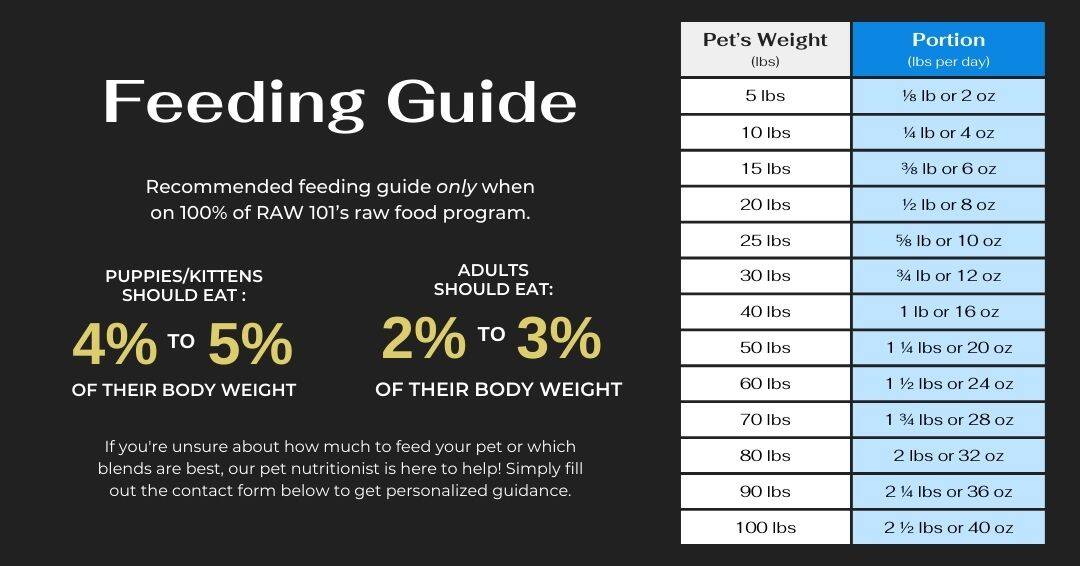
Credit: www.raw101.ca
Frequently Asked Questions
How Much Raw Food Should A 10 Pound Dog Eat Daily?
A 10 pound dog typically needs 1. 5% to 3% of its body weight in raw food daily. This equals about 2. 4 to 4. 8 ounces. Adjust portions based on activity level and age for best health.
What Types Of Raw Food Are Best For Small Dogs?
Small dogs thrive on a balanced raw diet of muscle meat, organs, and bones. Include poultry, beef, and fish. Add vegetables and supplements for nutrients. Variety ensures complete nutrition and supports overall health.
How Often Should I Feed My 10 Pound Dog Raw Food?
Feed your 10 pound dog raw food once or twice daily. Smaller meals twice a day aid digestion and energy levels. Monitor your dog’s appetite and adjust frequency if needed for best results.
Can Raw Food Cause Weight Gain In Small Dogs?
Raw food can cause weight gain if overfed or high in fat. Measure portions carefully based on your dog’s weight and activity. Balance raw meals with exercise to maintain a healthy weight.
Conclusion
Feeding a 10-pound dog the right amount of raw food keeps them healthy. Start with about 2-3% of their body weight daily. Watch your dog’s energy and weight to adjust portions. Fresh, balanced meals support strong muscles and shiny coats.
Always include variety for good nutrition. Consult your vet for personalized advice and safe feeding. Raw feeding takes care and attention but rewards with a happy dog. Simple steps lead to a healthy, active pet.

Emily Barker is the founder of ChillDogLife.com, a space dedicated to helping pup parents discover the best dog products, lifestyle tips, and cozy ideas for happier homes.
A lifelong dog lover, Emily combines her passion for pets with a knack for research to share trusted recommendations on everything from toys and furniture to health and everyday care.
Her goal is simple: to make life easier, stylish, and more joyful for dogs and the people who love them.
